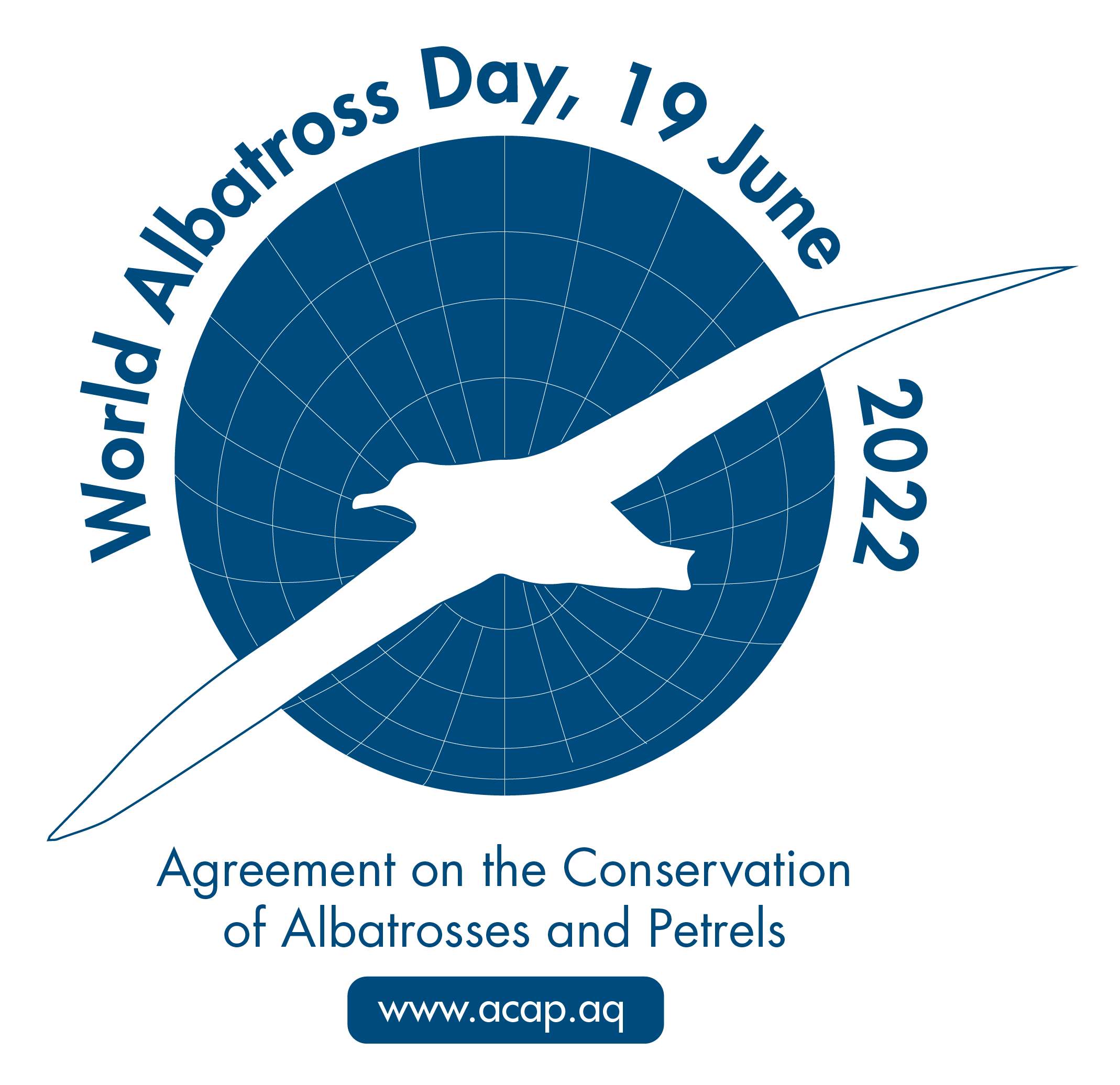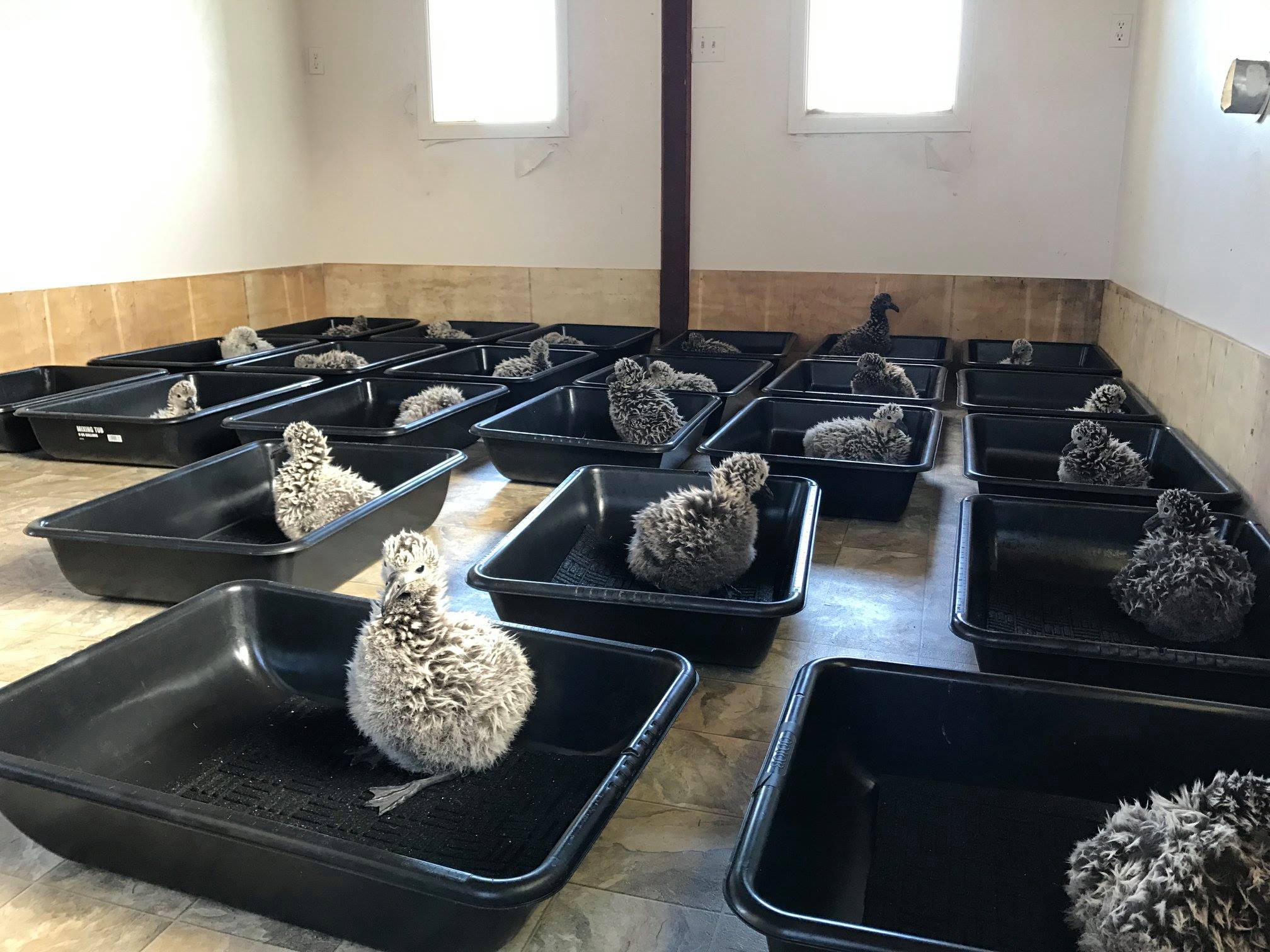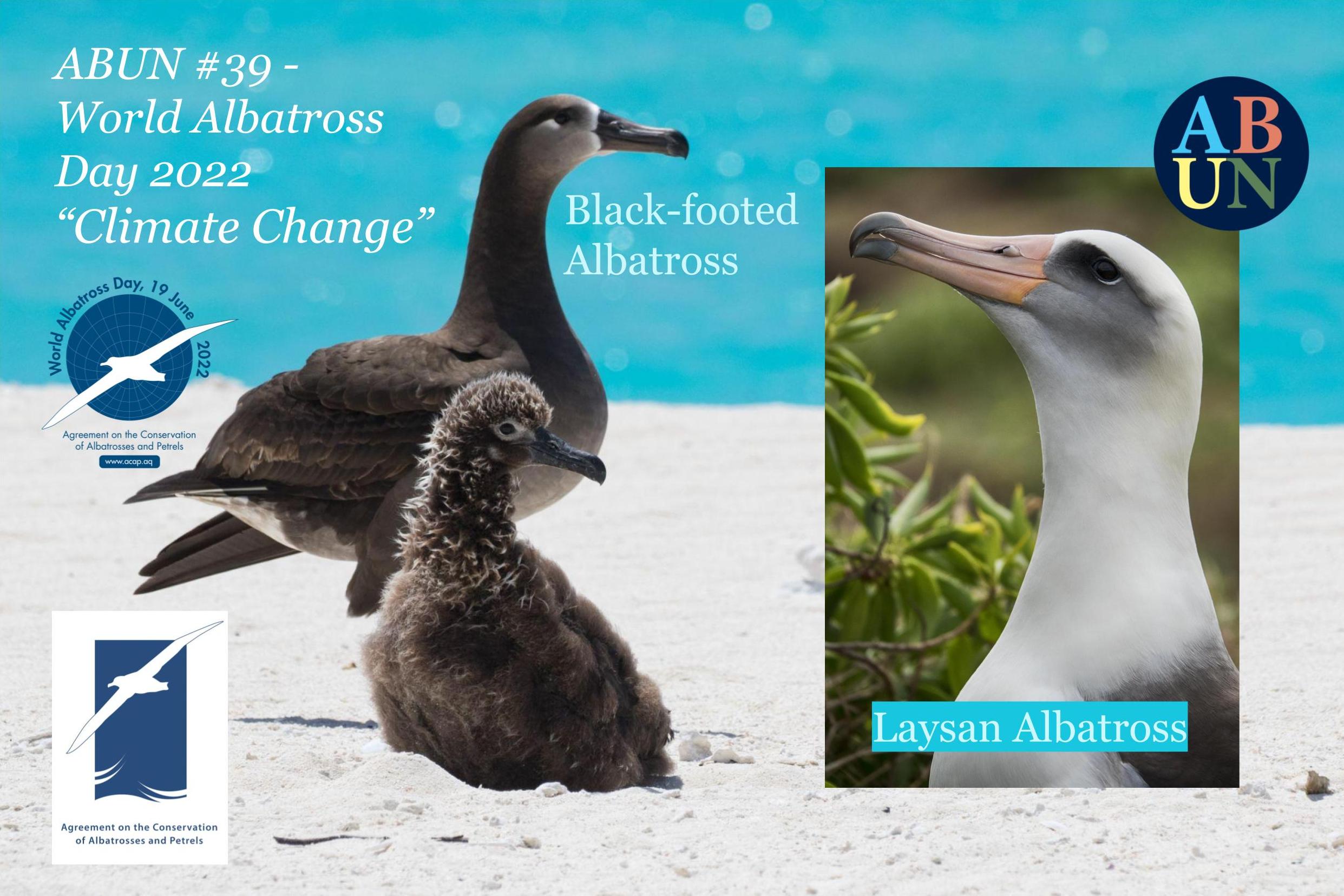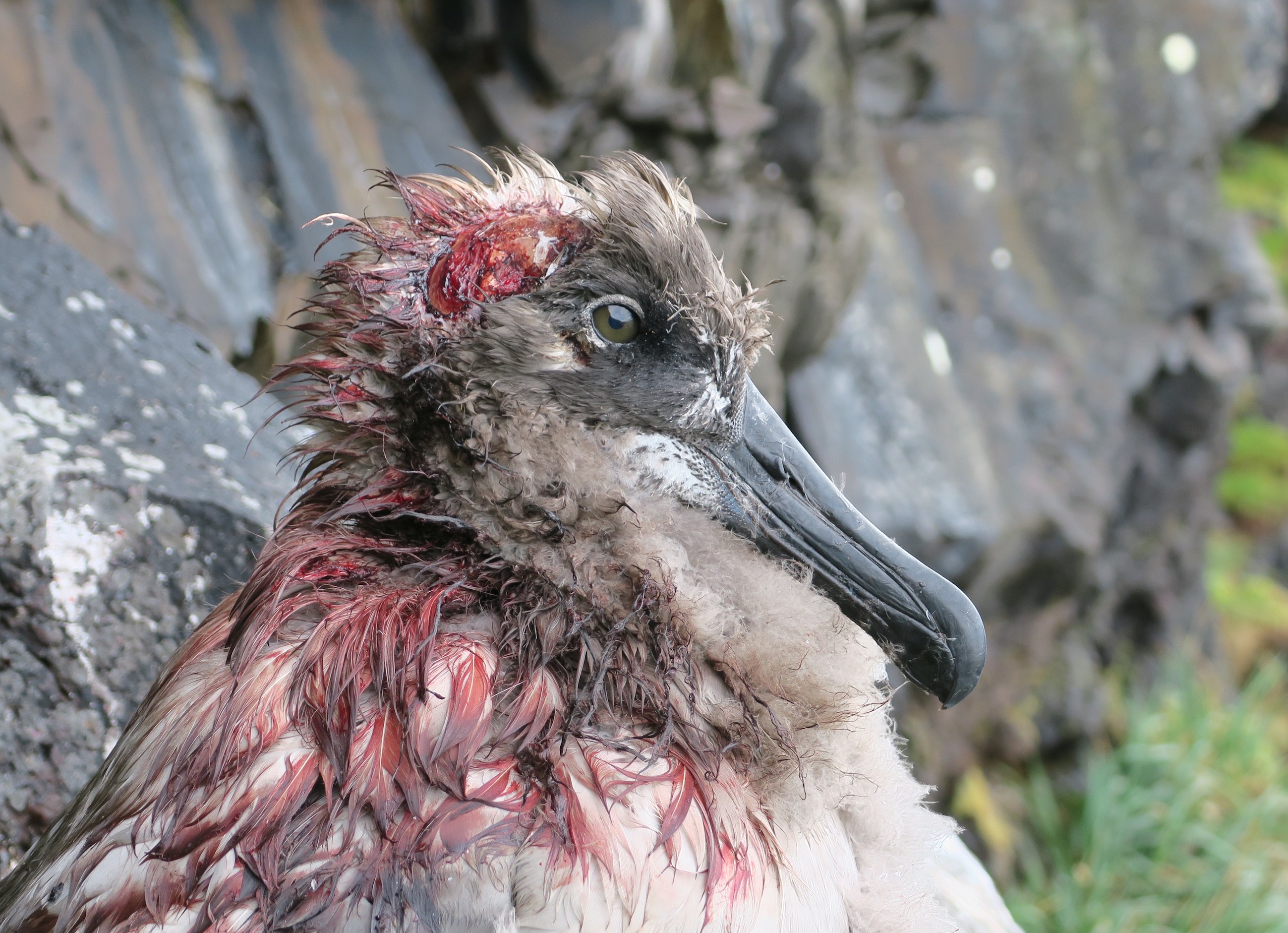
The Albatross and Petrel Agreement has chosen the theme “Climate Change” to mark the third World Albatross Day, to be celebrated on 19 June 2022. This follows the inaugural theme “Eradicating Island Pests” in 2020 and “Ensuring Albatross-friendly Fisheries” last year.
In support of World Albatross Day and its chosen theme ACAP highlights one or more of the 22 albatross species each year with posters, infographics and artworks in ACAP’s three official languages of English, French and Spanish. The featured species chosen for 2022 are two of the three species of albatrosses that breed in the North Pacific: the Black-footed Phoebastria nigripes and the Laysan P. immutabilis. Both these Near Threatened albatrosses have most of their breeding populations on the low-lying atolls of the USA’s North-Western Hawaiian Islands. These atolls - and their breeding seabirds - are all at risk from sea level rise and increases in the number and severity of storms that result in flooding, both considered a consequence of climate change. Storm floods have even caused at least one small sandy islet to disappear into the sea, losing breeding sites for several thousand albatross pairs (click here); elsewhere in the island chain, as on Midway Atoll, storms have caused flooding of albatross nests and loss of chicks close to the shore.

Translocated Black-footed Albatross chicks await feeding in the James Campbell National Wildlife Refuge, Oahu in 2018; photograph from Pacific Rim Conservation
ACAP is working with the Hawaii-based environmental NGO, Pacific Rim Conservation, to design infographics to be produced by illustrator Namasri 'Namo' Niumim, for the two albatrosses. These two new infographics will illustrate the NGO’s ongoing work to create a new albatross colony safe from predicted sea level rise by translocating and hand-rearing chicks on the Hawaiian island of Oahu.

ACAP is also pleased to announce it is once more working with ABUN (Artists & Biologists Unite for Nature) in January and February; this time to produce artworks for WAD2022 that depict Black-footed and Laysan Albatrosses (click here). Lastly, ACAP’s WAD poster designer, Michelle Risi, now based on Aldabra Atoll for two years after an extended stay on Gough Island, will, with the help of a number of excellent photographers, produce a poster series for the two birds that will be freely downloadable for printing during the build up to this year’s World Albatross Day on 19 June.

Attacked by mice on Marion: a ‘scalped’ Near threatened Light-mantled Albatross Phoebetria palpebrata, photograph by Peter Ryan
World Albatross Day 2022 will also highlight other effects of climate change on albatrosses. Examples include the warming climate of South Africa’s sub-Antarctic Marion Island, which has caused an increasing House Mouse population to turn to killing albatross chicks (click here), and recent research in the South Atlantic that suggests warming seas are increasing divorce rates in breeding pairs of Black-browed Albatrosses Thalassarche melanophris.
You can follow these initiatives, and more, in ACAP Latest News and on the ACAP Facebook page up until World Albatross Day on 19 June 2022.
With thanks to members of the ACAP World Albatross Day Group for their valued inputs to deciding a theme for 2022.
John Cooper, ACAP Information Officer, 04 January 2022, updated 06 January 2022

 English
English  Français
Français  Español
Español